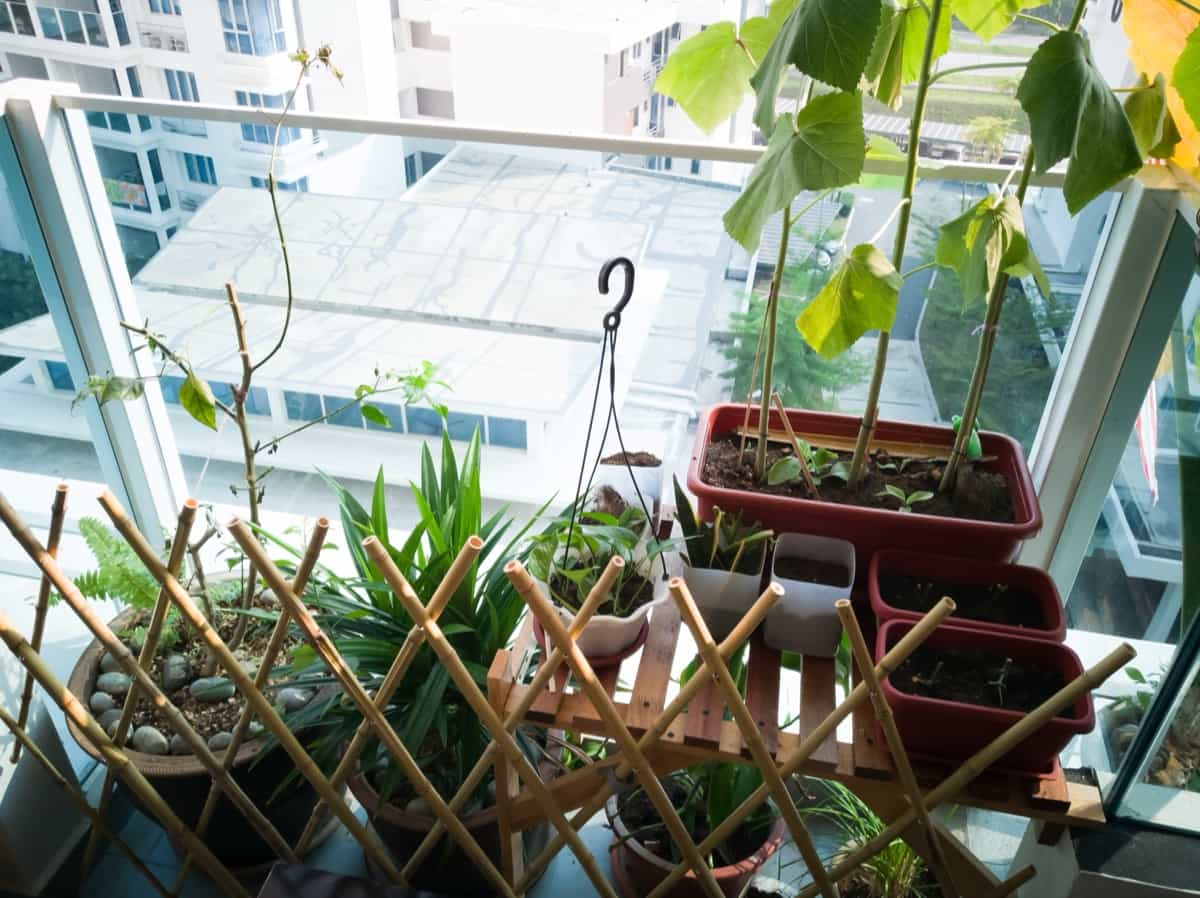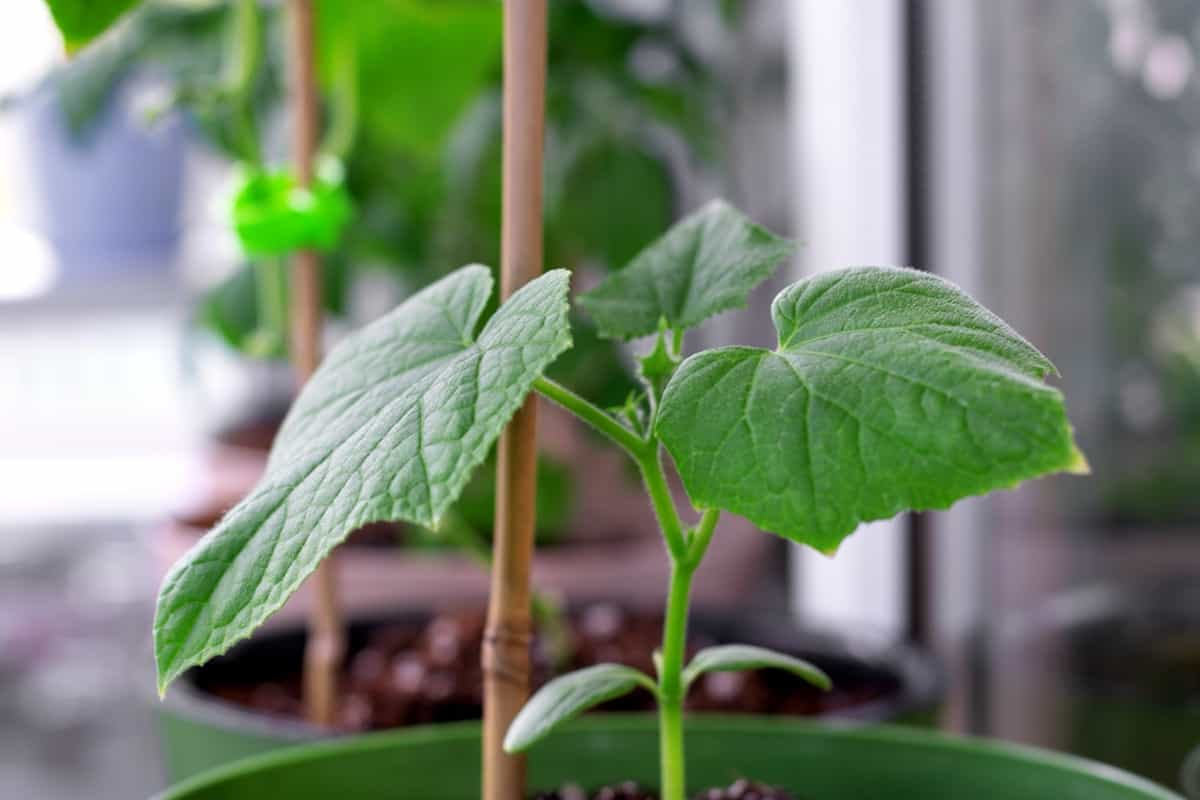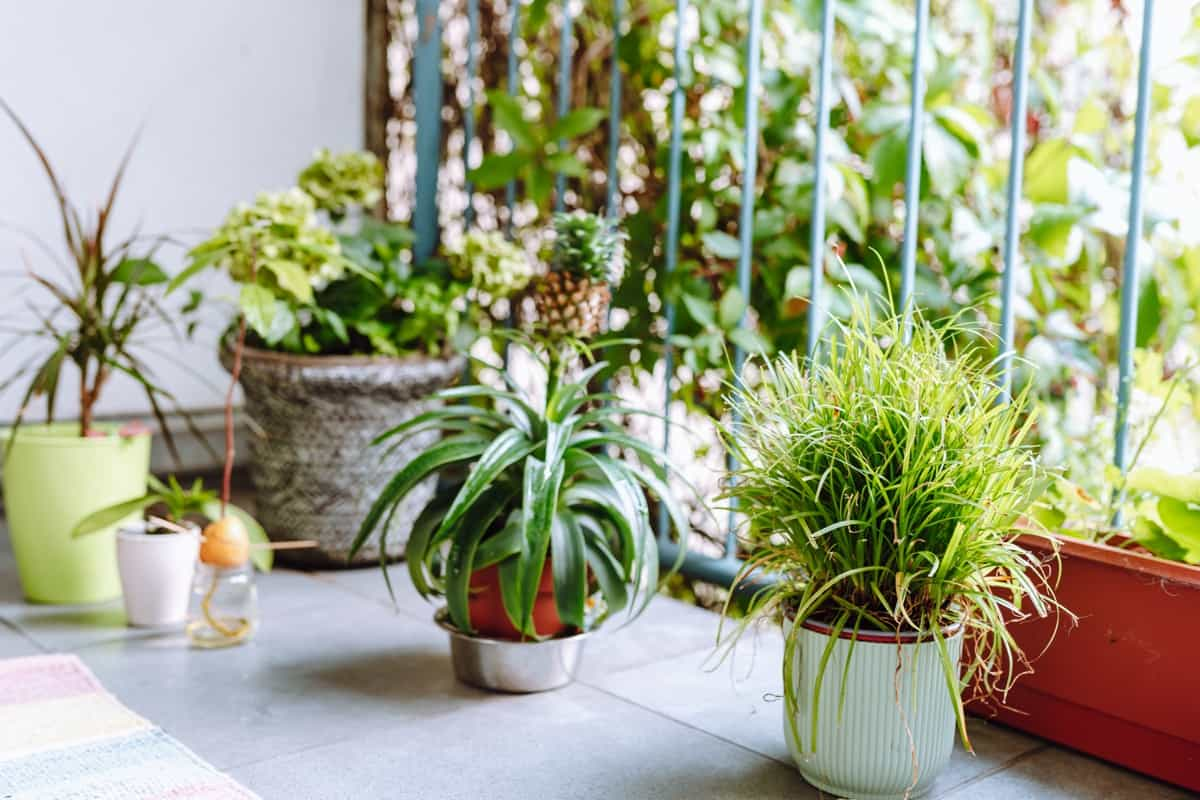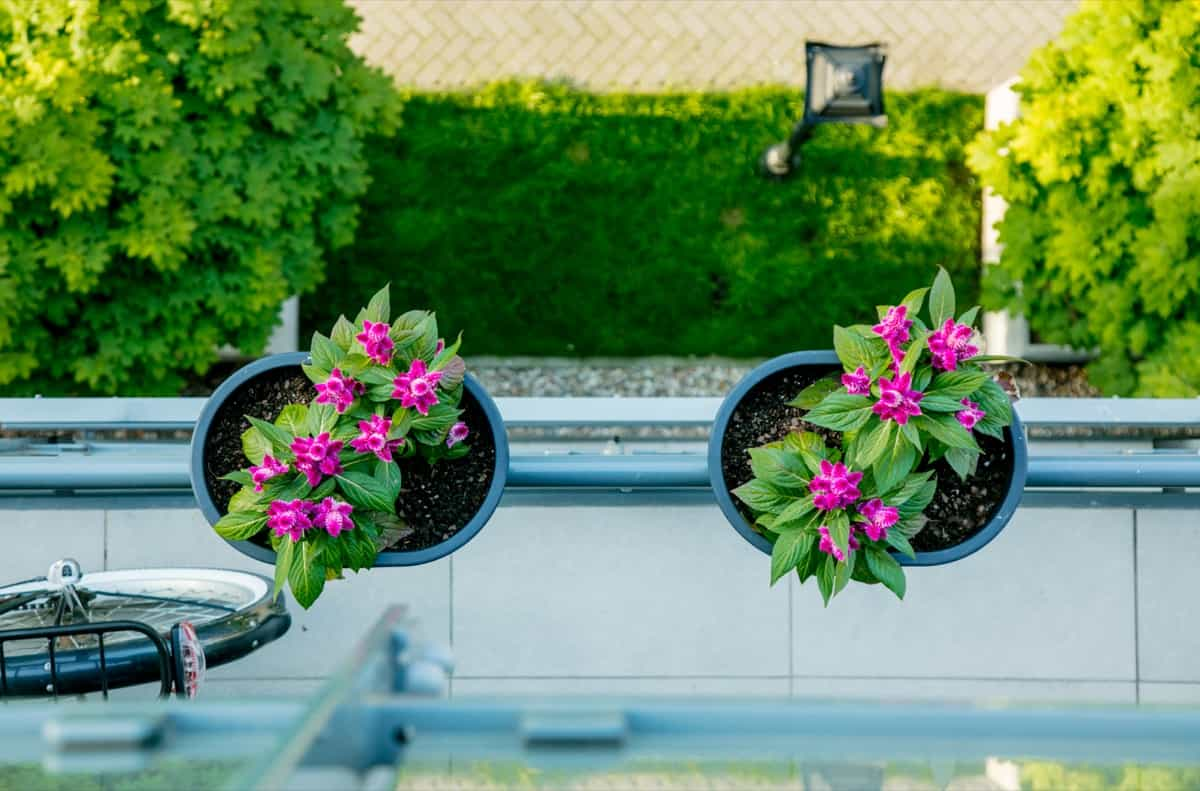Balcony gardens provide a charming oasis in urban living but are susceptible to fungal diseases that can compromise plant health. Fungi, thriving in the warm and humid microclimate of balconies, pose a significant threat to the flourishing greenery. Common fungal diseases include powdery mildew, leaf spot, and root rot, negatively impacting the aesthetic appeal and vitality of the garden.

Management of Fungal Diseases in Balcony Gardens
Causes of Fungal Diseases in Balcony Gardens
Several factors contribute to the prevalence of fungal diseases in balcony gardens. Inadequate air circulation, often exacerbated by confined spaces, promotes fungal growth. Excessive moisture from overwatering or poor drainage creates a favorable environment for fungi to thrive. Additionally, contaminated soil or infected plant material introduced to the garden can be sources of fungal spores.
Insufficient sunlight and nutrient imbalances weaken plants, making them more susceptible to fungal infections. Vigilant garden management practices, including proper watering, soil sanitation, and regular inspection, are crucial in preventing and managing fungal diseases in balcony gardens, ensuring the longevity of a vibrant and healthy green retreat.
How to Identify Fungal Diseases in Balcony Gardens
- Identifying fungal diseases in balcony gardens is essential for timely intervention. Look for signs such as powdery white or discolored patches on leaves, a common indicator of powdery mildew.
- Dark lesions or spots on foliage may suggest leaf spot diseases while wilting or rotting roots signal potential root rot.
- Be vigilant for unusual growth patterns, distorted leaves, or mold. Inspect the undersides of leaves, where fungal spores often accumulate.
- Foul or musty odors can also indicate fungal infection.
- Regularly monitor plant health, noting color, texture, or overall appearance changes.
- Swift action, including pruning affected parts and applying appropriate fungicides, can mitigate the spread of fungal diseases and preserve the vitality of your balcony garden.
Importance of Early Detection and Diagnosis of Fungal Diseases in Balcony Gardens
Early detection and diagnosis of fungal diseases in balcony gardens are paramount for preserving the health and vibrancy of the green space. Swift identification allows for timely intervention, preventing infection spread and minimizing plant damage. Fungi can proliferate rapidly, leading to irreversible harm if not addressed promptly. Early detection enables targeted and less invasive treatment, reducing the need for extensive interventions that might harm the overall garden aesthetic.
In case you missed it: Management of Fungal Diseases in Potatoes: How to Control and Prevent with Natural and Organic Treatment

Moreover, it helps prevent the loss of valuable plants and promotes sustainable gardening practices. Regular monitoring for signs of fungal diseases, such as discoloration, lesions, or unusual growth patterns, empowers gardeners to implement preventive measures efficiently, such as adjusting watering practices or improving ventilation. Ultimately, the importance of early detection lies in maintaining a flourishing and resilient balcony garden, enhancing the overall enjoyment and longevity of the urban green space.
Best Natural and Organic Methods for Preventing Fungal Diseases in Balcony Gardens
Natural and organic methods can prevent fungal diseases in balcony gardens. Implement proper watering practices to avoid waterlogged soil, ensuring good drainage. Enhance air circulation by spacing plants appropriately and trimming dense foliage. Mulching with organic materials helps maintain soil moisture balance.
Employing neem oil or garlic-based sprays acts as natural fungicides. Regularly inspect and remove infected plant parts promptly. Introducing beneficial insects like ladybugs aids in controlling harmful pests that may contribute to fungal growth. Embracing these eco-friendly strategies fosters a resilient and thriving balcony garden while minimizing the need for synthetic chemicals.
Best Cultural Practices to Control Fungal Diseases in Balcony Gardens
First and foremost, practice proper watering by irrigating at the base of plants in the morning to allow foliage to dry during the day, discouraging fungal growth. Provide sufficient spacing between plants to improve air circulation and reduce humidity. Use well-draining soil and consider mulching to maintain consistent soil moisture. Regularly remove debris and fallen leaves to eliminate potential breeding grounds for fungi.
Rotate plant varieties to disrupt disease cycles and avoid planting susceptible species in succession. Quarantine new plants to prevent introducing infections. Additionally, promotes plant health through balanced fertilization and ensures proper sunlight exposure. Integrating these cultural practices fosters a resilient and disease-resistant balcony garden, promoting long-term plant vitality.
Effective Watering Techniques to Prevent Fungal Diseases in Balcony Gardens
Water plants at the base in the morning to allow for thorough drying throughout the day, minimizing moisture on foliage. Use a garden hose or install a drip irrigation system to supply water to the root zone directly, avoiding wetting the leaves excessively. Ensure proper drainage by using well-draining soil and containers with drainage holes to prevent waterlogging.
In case you missed it: Managing Fungal Diseases in Ornamental Grasses: How to Control and Prevent with Natural and Organic Treatment

Implement a consistent watering schedule, adjusting based on weather conditions. Avoid overhead watering, as it can promote fungal growth by creating a humid environment. These practices maintain optimal moisture levels while reducing the risk of fungal infections, contributing to balcony garden plants’ overall health and resilience.
Best Soil Management and Amendments for Fungal Disease Prevention in Balcony Gardens
Effective soil management is key to preventing fungal diseases in balcony gardens. Start with a well-draining, high-quality potting mix to avoid waterlogged conditions. Regularly aerate the soil to enhance oxygen flow to plant roots, discouraging fungal growth. Integrate organic matter like compost to promote soil health and microbial activity, creating an environment hostile to fungi.
Consider using natural fungicide-containing amendments like neem cake or garlic. Crop rotation in containers and replacing the top layer of soil annually can further minimize disease risks. These soil management practices create a balanced, disease-resistant substrate, contributing to the overall well-being of plants in balcony gardens.
Best Companion Plants for Fungal Disease Control in Balcony Gardens
Selecting companion plants strategically can aid in fungal disease control in balcony gardens. Marigolds (Tagetes) release compounds that deter harmful nematodes and suppress soil-borne fungi. Basil (Ocimum basilicum) emits aromatic oils with antifungal properties, protecting nearby plants. Chives (Allium schoenoprasum) have natural fungicidal properties, deterring fungal infections.
Additionally, planting mint (Mentha) can repel pests that may contribute to fungal issues. Nasturtiums (Tropaeolum majus) act as a trap crop for aphids, reducing the likelihood of fungal transmission. Integrating these companion plants enhances biodiversity and fosters a healthier, more resilient balcony garden, naturally suppressing fungal diseases and promoting overall plant well-being.
Best Beneficial Insects for Fungal Disease Management in Balcony Gardens
Introducing beneficial insects to your balcony garden can be an eco-friendly and effective approach to fungal disease management. Ladybugs (Coccinellidae) are voracious predators of aphids and other soft-bodied pests, helping prevent the spread of fungal infections. Predatory mites, such as Phytoseiulus persimilis, feed on harmful mites that can damage plants and contribute to fungal growth.
In case you missed it: Management of Fungal Diseases in Strawberry: How to Control and Prevent with Natural and Organic Treatment

Lacewings (Chrysopidae) are generalist predators, consuming various garden pests, including those involved in fungal disease transmission. Parasitic wasps, like Encarsia formosa, target whiteflies, which can contribute to the spread of fungi. Introducing and maintaining populations of these beneficial insects creates a natural and sustainable method for managing pests, indirectly reducing the risk of fungal diseases in your balcony garden.
Conclusion
In conclusion, effective management of fungal diseases in balcony gardens relies on a holistic approach, incorporating natural and organic treatments. Embracing sustainable solutions controls fungal diseases and enhances balcony gardens’ overall health and longevity, ensuring a vibrant and pesticide-free urban oasis.
- Beneficial Insects in Pest Management
- Natural Solutions for Pest Control in Flower Gardens
- Types of Fungicides Used in Agriculture
- Common Issues in the Fruit Development Stage of Pomegranate Farming
- Fruit Development Issues in Papaya: Easy Solutions and Treatment
- Soil-Borne Diseases and How to Protect Your Plants
- Practices to Prevent Disease Spread in the Garden
- From Wilted to Thriving: How to Treat Root Rot Naturally in Houseplants
- Natural Remedies to Cure Brown Spots on Fig Tree Leaves